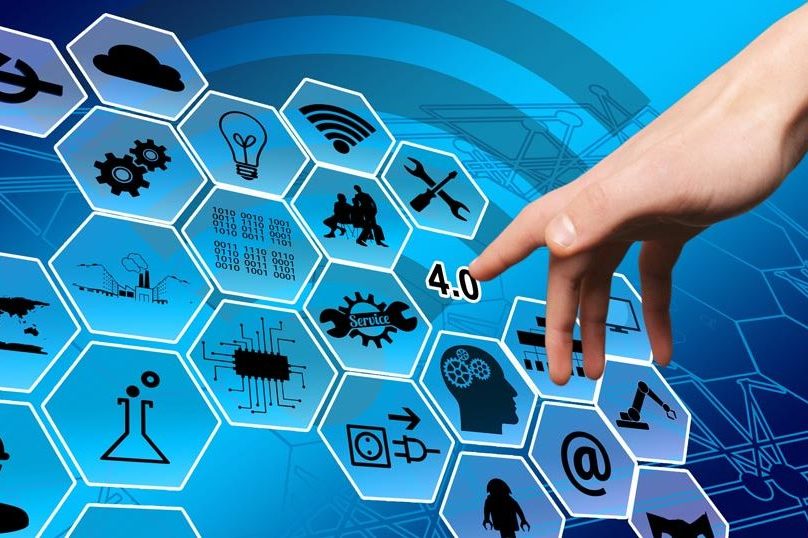Sponsor article

It’s incredible how quickly we come to take technology for granted. Back in the days of 3G, watching video on your mobile phone was doable, but it wasn’t exactly a great experience. Today, we take for granted being able to stream high-definition video and do a million other things on our phones. We’ll probably look back on the launch of 5G in a similar way.
Like the transition from 3G to 4G, as well as making the doable better, 5G will also make entirely new things possible. Very soon, it will seem normal that everything is connected and intelligent. And in ten years’ time—that’s how long 4G has been around—the world will be barely recognisable.
5G has been developed to support technologies that weren’t really on the agenda when 4G was developed, like smart “Internet of Things” (IoT) devices, augmented reality and artificial intelligence/machine learning (AI/ML) apps. It’s able to deliver extremely low latency, high-bandwidth connectivity to a huge number of devices— eventually up to one million per square kilometre.
You ain’t seen nothing yet.
Current mixed or extended reality solutions are pretty amazing, but with 5G they should be mind-blowing—and not limited to Hollywood studios and big brands. Soon, any company will be able to deliver high-definition, virtually lag-free experiences. Entertainment is likely to be one of the first big applications, but it could also be used in many other ways, including providing real-time assistance to workers performing complicated tasks. We’ll also see digital twins and mirrorworlds—virtual replicas of real world environments—enable companies to optimise their operations and model the effect of changes before making them.
Today, robots mainly do repetitive tasks. With 5G and edge computing, we’ll see intelligent robots take on much more complex and interactive tasks. And cobotics, where robots and people collaborate, could take human capabilities to new levels.
5G will also enable sophisticated real-time video analytics, which can improve safety by preventing collisions and providing early warning of potentially dangerous situations. And much, much more.
In 2020, the next phase of 5G deployment, 3GPP Version 16, will be rolled out. That enables the ultra-reliable low-latency communication (URLLC) and network slicing functionality which enables these new applications. That’s going to transform many, many industries: from healthcare to logistics, agriculture to energy and utilities.
Don’t get left behind.
There’s no time to waste. Many companies are already embracing 5G. Across Europe, and beyond, regulatory bodies have made available spectrum for private 5G networks. The cost of these licences is typically nominal, akin to an admin fee, and demand is likely to be high. According to BNetzA, the German telecoms regulator, over 70 companies have already bought private 5G licences, including BASF, BMW, Bosch, Lufthansa, Siemens and Volkswagen.
Companies that are acting now aren’t doing so just for the immediate benefits; many of them will be thinking about getting ahead in understanding the technology and getting results they can’t even imagine yet.
With one of these licences, a company will be able to implement private 5G across a campus, plant or distribution site. This includes environments where other wireless networking technologies are ineffective or difficult to deploy. A great example of this is a port, where installing lots of access points just isn’t practical. But with 5G, port owners can implement solutions like 3D collision avoidance systems which can cut repair bills, downtime, insurance and legal issues, and, most importantly, injuries.
Get serious.
Perhaps this sounds too good to be true. The potential is definitely for real, but it’s true that there’s more to delivering private 5G seamlessly and securely. Getting a licence may be inexpensive, but navigating what’s available in what country and actually getting one can be tricky. Architecting the right infrastructure for each of your campuses, plants or distribution centres requires significant expertise. Then you still have to get your devices to work with 5G and integrate with your core systems, like enterprise resource planning (ERP). You might not need all these things for a pet project, but you will if you want to create innovative, mission-critical applications that can transform your business.
And that’s where Verizon’s expertise comes in. We have been a leader in the development and deployment of 5G. And we’ve got vast experience of building wireless networks in all kinds of environments, both outdoors (from the heat of desert plains to up snowy mountains) and indoors (from hospitals to manufacturing plants).
We’re also at the forefront of deploying edge computing. This enables more processing to be done nearer the device, and can cut response times. A few milliseconds may not seem like much, but when you’re running autonomous vehicle systems or precision robotics in healthcare, they can make a huge difference.
5G isn’t going to just make what we can do today better. It’s not hyperbole to say that by enabling continuous near-real-time communication between people and things, it’s going to change the world. And private 5G is a key part of how companies can take advantage of the technology now.
Private 5G built right.
Verizon has a reputation for engineering excellence and technical expertise. We’ve built mobile networks that span diverse landscapes—from densely populated cities, to vast open spaces like mountain ranges and plains. This experience translates directly to building private networks that deliver seamless enterprise mobility and connectivity no matter how complex your environment.
While 5G provides a whole new experience, it leverages security measures that were developed in the 4G environment. As the owner and operator of the one of the world’s largest 4G LTE networks, we have a massive headstart on getting the most from these features.





Leave A Comment